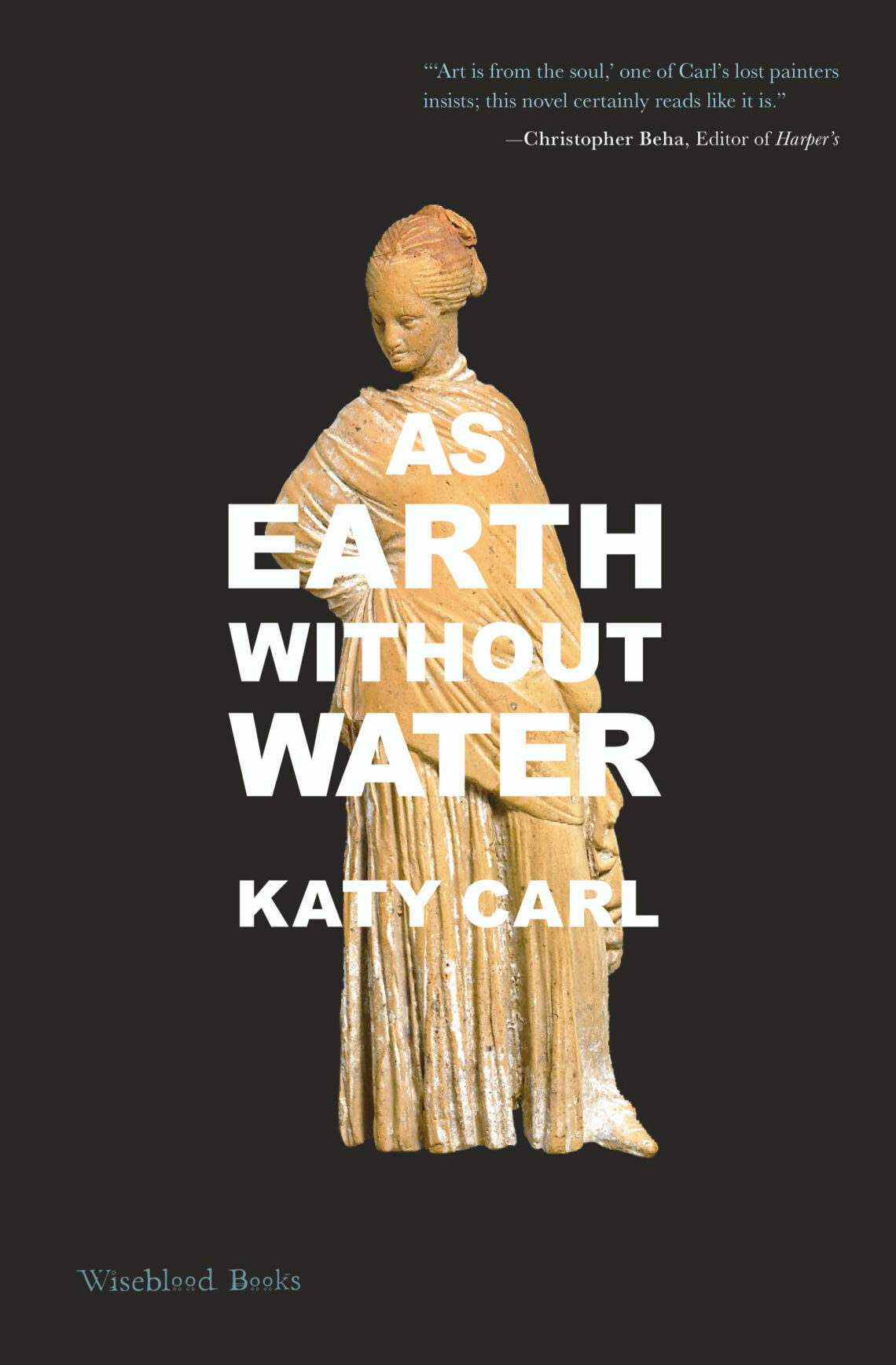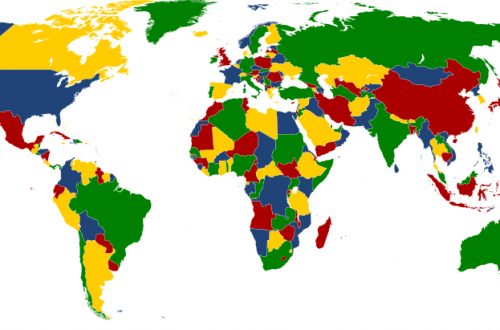by Anne-Sophie Olsen
As Earth Without Water
by Katy Carl
Wiseblood Books, 2021; 232 pp., $14.00
When I first received Katy Carl’s debut novel, As Earth Without Water, in the mail and read its opening sentence, I knew I was in for a breathtaking ride:
Halfway up the rise of a dark steel forest, arrayed against a gradient of blue—a staircase of ambition, the skyline of Chicago—this is where I found myself, the morning he found me: on the fifty-seventh floor, in the unforgivably blank offices of GryphoLux, Inc.
An opening sentence can tell you a lot about the quality and kind of novel its writer is after. This opening, with its transfigurative vision (that dark steel forest, that staircase of ambition), syntactical twists (thought embedded within thought, the repetition and variation of found), and sense of the relationship between place and consequence (see the final two clauses), speaks of a writer determined to interpret the meanings of events only after looking honestly at all their dimensions: literal, metaphorical, metaphysical. This is a trustworthy novelist, I thought to myself upon reading this first line, one who will leave no important stone unturned.
*****
As Earth Without Water follows the spiritual journey of a young artist named Angele Solomon who, after several years of ambition, has abandoned the studio for a corporate job (see the artistic vision of the gradient of blue, the corporate severity of the unforgivably blank offices of GryphoLux, Inc.). But when the “he” of the opening sentence (old friend and former lover Dylan Fielding, celebrated visual artist) brings Angele to a gallery display of his art, she is returned to a world of questions she thought she’d left behind: What does it mean to be a successful artist? Is success at odds with artistic authenticity? What does it mean to follow (or not follow) a calling?
Carl traces her characters’ grapplings with these questions over a sixteen year period (2001 to 2017). Though we begin with Angele mired in her corporate job in 2015, we soon get glimpses of the past (the path Angele took to first becoming an artist, alongside her friends Dylan and Beatrice, in 2001-2005) and present (2017), wherein Angele finds herself visiting Dylan (now Br. Thomas Augustine) at Our Lady of the Pines monastery. She is here because Br. Thomas Augustine has sought her friendship in a time of desperation and confusion: just prior to the time of his final vows, an experience of clerical abuse has complicated the answers he thought the monastery had given him.
Angele’s understanding of loyalty and trust is also called into question as she grapples with what it might mean for Br. Thomas Augustine to stay, what it might mean for him to leave, and what either path would imply about the nature of freedom and the past’s hold on the present. “Where would I go to get away from where it happened?” Br. Thomas Augustine asks Angele after revealing the truth of his abuse. “My body is where it happened.” And to herself, Angele later thinks, How do others push back the past, rule it out in favor of a future that evades its pressure? Do they truly succeed in doing this, or do they only delude themselves, teach the past to play dead?
These are questions Carl will dedicate the rest of the novel to answering, not prescriptively, but through the gentleness of experience — that unexpected salve, the reliable passage of time.
*****
Both Angele and Dylan embody a restlessness that could be diagnosed as spiritual. Their ambition is for transfiguration: the rendering of vision into something transcendent on canvas. “Art is from the soul,” Dylan remarks. But does art also transform the soul? And is this at all the point? To both these questions, Carl seems to suggest yes. While considering Dylan’s artwork at the gallery, Angele is arrested by a moment of insight:
These paintings are more than who Dylan is. They are the finest way in which he shows up in the world, better than his best self. No wonder he has so needed to make them. No wonder he has not been able to stop.
And what of Angele herself? During a moment of distress much later in the novel, Angele wanders the property at Our Lady of the Pines and muses:
The landscape whispers a different story. Forget about all that, it says. Look, here are valleys, crests, ridges. Here are brown and ochre, here is goldenrod, here is olive. Here is a sky the color of a canvas. All right, so you hate yourself: that isn’t so much wrong as it is irrelevant. Suppose you go in and find a sketchbook. Suppose you go home and try painting this.
Art-making, then, is necessary. For some more than others, it is a mode of survival: a way out of the low-ceilinged room of the ego — that self whose interest is only the self, and not others, their trials and sufferings — and into the expanse of a more authentic, more joyful self: a self transfigured. The soul.
I am reminded of a quotation from James Longenbach’s The Virtues of Poetry: “More than lack of ambition, it is the inability to surrender to our inevitable callings and rhythms that keeps us from fulfilling our promise….The surrender of the will is itself impossible merely to will, and we may struggle with the act of surrender more deeply than we struggle with the act of rebellion.”
Carl’s characters embody this difficulty. In thought and in action, they struggle to resist (what? the call of art, the twinge of conscience), then attempt to surrender, then double back on resistance. Though art-making frees them into more open and attentive versions of themselves, they cannot sustain that expansiveness for long. In light of this, Carl’s deeply wrought syntax seems to arise from spiritual necessity, as much as from artistic earnestness.
But ultimately, Carl’s novel is a journey of hope. Despite characters’ woundedness, art-making still frees and transfigures: draws out the parched soul, leads it to water. In the end, Carl suggests, it is the water from which the soul drinks that matters; for some, art-making is simply the path that leads there.

Anne-Sophie Olsen hails from St. Paul, MN and is currently pursuing her MFA in Roanoke, VA, where she lives in a barn with a cat named Pip. Her work has appeared or is forthcoming in places such as Birdcoat Quarterly, The Hollins Critic, Dappled Things, and Soul-Lit.




